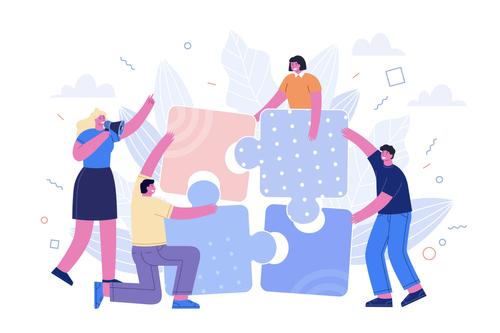Suppose Ramon and Frank are both young boys attending high school.
Ramon, a young Latino teen, grew up in a community with a lower socioeconomic status. His loving parents, monolingual Spanish speakers, worked in low-waged work. Although his parents did some college in another country, their employers did not accept their educational background. Instead, his parents endured workplace violations to provide for their kids. Ramon spends his after school time babysitting his younger siblings.
Meanwhile, a Caucasian teen named Frank lived in a community with higher socioeconomic resources. His schools received more money from property taxes to afford smaller class sizes, a full-time nurse, and maybe a few new laptops. Frank’s parents are software engineers who met in college. Last week, his parent’s boss came over for dinner and loved Frank’s endearing personality. Today, they offered Frank a paid internship.
While both Ramon and Frank are both in High School, their privileges or lack thereof affects their life opportunities. Ramon’s identities as a low-income Latino young man apart of a mixed-status household yield very different opportunities than Frank’s affluent Caucasian household that easily connects him with a network of employers. Both Ramon and Frank demonstrate how varying positionalities either systematically grants or denies opportunities; thus, creating the opportunity gap.
What is the opportunity gap?
The opportunity gap represents a multifaceted and inequitable process where affluent and profoundly privileged people have access to more resources and opportunities than those not similarly situated. The significant disparity creates this gap.
People’s multiple marginalized identities intersect to provide a unique experience. Often translates into being disproportionately impacted by the opportunity gap. For example, Ramon has to help around his household by watching his siblings, which affects his time to dedicate to his studies, extracurriculars, and potential internships. Despite not having the same access to test preparation courses or internship experiences, college admissions officers will compare Ramon’s college entrance exam scores and resume with Frank’s. The opportunity gap is not just symbolic but can impact the trajectory of one’s higher education and overall career attainment.
Why a network helps close the opportunity gap
Your networks matter. Research suggests that most professionals were hired based on referrals. Those from wealthier communities, top schools, and top employers are likely to have stronger networks. These relationships, if leveraged correctly, can become job opportunities.
Frank’s parent’s network offered Frank a paid internship. Meanwhile, under-resourced people like Ramon, are likely to have the gap most impact their networks. We, at Close the Gap Foundation, believe that Ramon should be afforded a fighting chance at the same internships and jobs.
Close the Gap Foundation’s vision is a future without opportunity gaps
We believe that where you are born or raised should not dictate your future. CTG Foundation is proud to join various companies like LinkedIn, who have committed to lessening the harmful impacts of the network gap.
CTG Foundation utilizes project-based learning to empower young leaders from under-resourced backgrounds to tackle social issues in their community. Throughout their development, CTG Foundation Scholars connect with mentors, grow their networks, develop professionally and, most importantly, they positively impact their communities.
What can you do to help close the gap
First and foremost, acknowledge the gap. Without a doubt, these gaps necessitate collective action from all those in the workplace and beyond.
While there is no band-aid for the systemic problem, consider some of the following ideas. In your positions of influence and power, mentor people who hold identities who traditionally do not have access to your positions. As a philanthropist, donate your time, energy, or money to organizations that intentionally reinvest resources to under-resourced communities to eliminate these disparities.
If you hold marginalized identities and are interested in investing in young scholars that look like you, consider becoming a mentor or joining professional development programs like Close the Gap Foundation. As educators and figures of authority in your community, normalize opportunities like our own with your youth. It is time to uplift those underrepresented in the workplace and overrepresented in the gaps.
Courtesy of Dribbble

